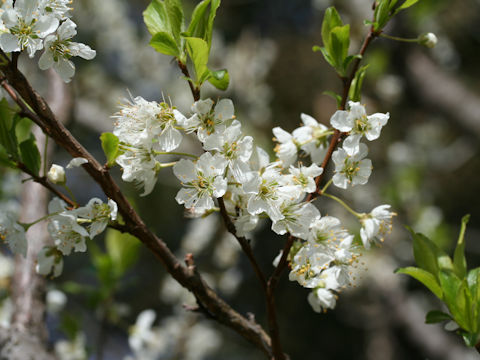 |






|

|
アメリカの育種家、ルーサー・バーバンク(Luther Burbank)によって1907年に作出されました。わが国の「すもも(Prunus salicina)」に、アメリカ原産の「アメリカすもも(Prunus americana)」あるいは中国北部原産の「シモンすもも(Prunus simonii)」を交雑したものと考えられています。満開後108日で収穫できる中生種で、わが国へは1920年代に導入されました。現在では、世界で最も多く栽培される品種となっています。果実は円形で、完熟すると果皮が深紅色から紅紫色に着色します。果肉は黄色で肉質がよく、酸味が強いものの独特の芳香があります。
|

|
バラ科サクラ属の落葉高木で、学名は Prunus salicina cv. Santa Rosa。英名は Japanese plum 'Santa Rosa'。
|

|
The Japanese plum 'Santa Rosa' (Prunus salicina cv. Santa Rosa) belongs to Rosaceae (the Rose family). It is a tall deciduous tree that was created in 1907 by the American breeder Luther Burbank. It is believed that the Japanese plum was crossed with "American plum" (Prunus americana) native to the United States or "Prunus simonii" native to northern China. It is a mid-season crop species that can be harvested 108 days after full bloom and was introduced to Japan in the 1920s. Today, it is the most cultivated variety in the world. The fruits are round, and when fully ripe, the pericarp turns from crimson to magenta. The flesh is yellow and has good meat quality, and although it has a strong acidity, it has a unique aroma.
|

|
大阪府交野市「大阪市大付属植物園」にて、2006年04月06日撮影。
|




